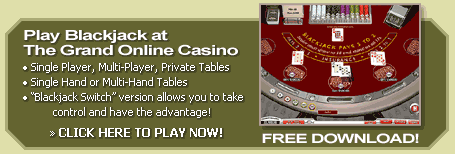Blackjack Insurance There is perhaps no bigger argument at a blackjack table than whether the player should buy blackjack insurance. When the dealer turns an Ace as their upcard, the dealer will then ask if the players would like to “insure” their hands. If the player accepts this bet, they must place one-half of their original bet before any action is taken on their hand. If the blackjack insurance wager wins, which means the dealer has blackjack, pays off at two-to-one odds. When the player is dealt a blackjack, say a King, Ace, and the dealer is showing an Ace, there is an inclination from the player to “protect” this hand by buying blackjack insurance. The logic being used is, the blackjack is a bonus hand, which pays off at three-to-two odds. There are not too many blackjacks dealt by the dealer, so players feel they need to get something out of that hand. If the dealer also has a blackjack then the hand is a tie and they would get nothing except their original bet back. By placing a blackjack insurance wager, the player is making the assumption that they will always end up with a profit. This thinking is logical, but flawed. There are 16 ten valued cards leaving 36 non ten valued cards (a 2.25 to 1 ratio) in a deck of 52 cards. When faced with the situation in which we have a blackjack and the dealer is showing an Ace, we have a ratio of 2.27 to one as there are now only 15 ten valued and 34 non en valued cards remaining. Since blackjack insurance pays only two-to-one, you’re getting the worst of it on that basis alone. Let’s look at four different situations and the results that can occur. We will assume your bet is $10 and you have been dealt a blackjack with the dealer showing an Ace.
In the first two situations, you would win $10. In the first case, the original $10 bet is pushed and the blackjack insurance $5 bet is paid off at 2 to 1. In the second case the dealer doesn’t have blackjack, which means that the player wins $15 from the original bet, but loses the $5 blackjack insurance bet. Both of these situations leave a $10 profit. In the third case, you have ties the dealer and without the blackjack insurance wager you keep your $10 bet. In last case, you beat the dealer, giving you a gain of $15. You can see that in three cases you make money and in one you don’t win anything. As explained before, with a blackjack in your hand and the dealer showing an ace, there are only 15 ten valued and 34 non ten valued cards remaining. To make a blackjack the dealer must have a ten valued card as their hole card. This means that the dealer has a 30.6 percent chance of having a blackjack and a 69.4 percent chance of not having a blackjack. Clearly, results two and four are going to happen much more often than results one and three. The most profitable result is obviously the one which also occurs most of the time. By not insuring you are gaining about 4.1 percent. The only player who would gain by placing a blackjack insurance bet is someone that is using a card counting strategy.Resources: Double Down Chart | Hit and Stand Chart | Splitting Pairs Chart |



